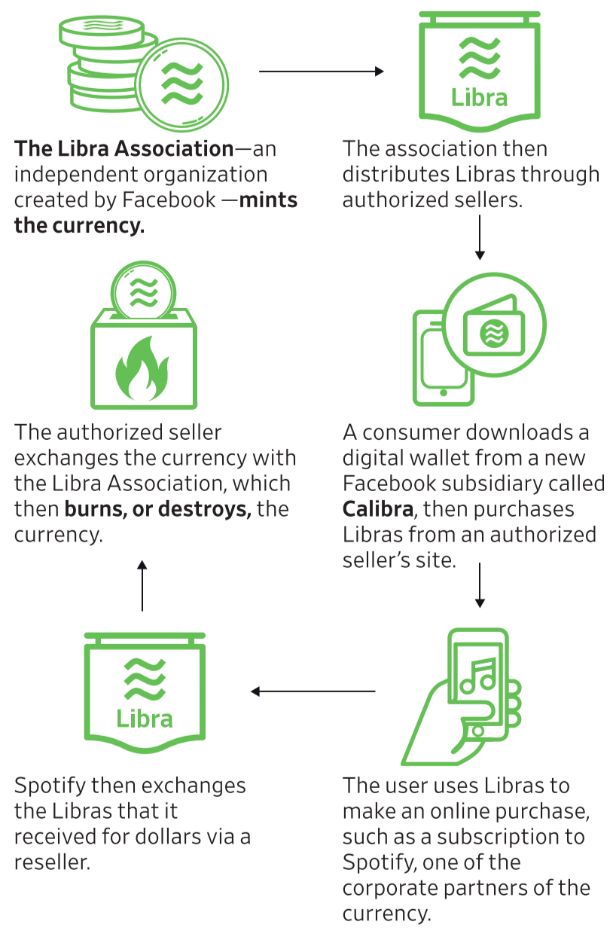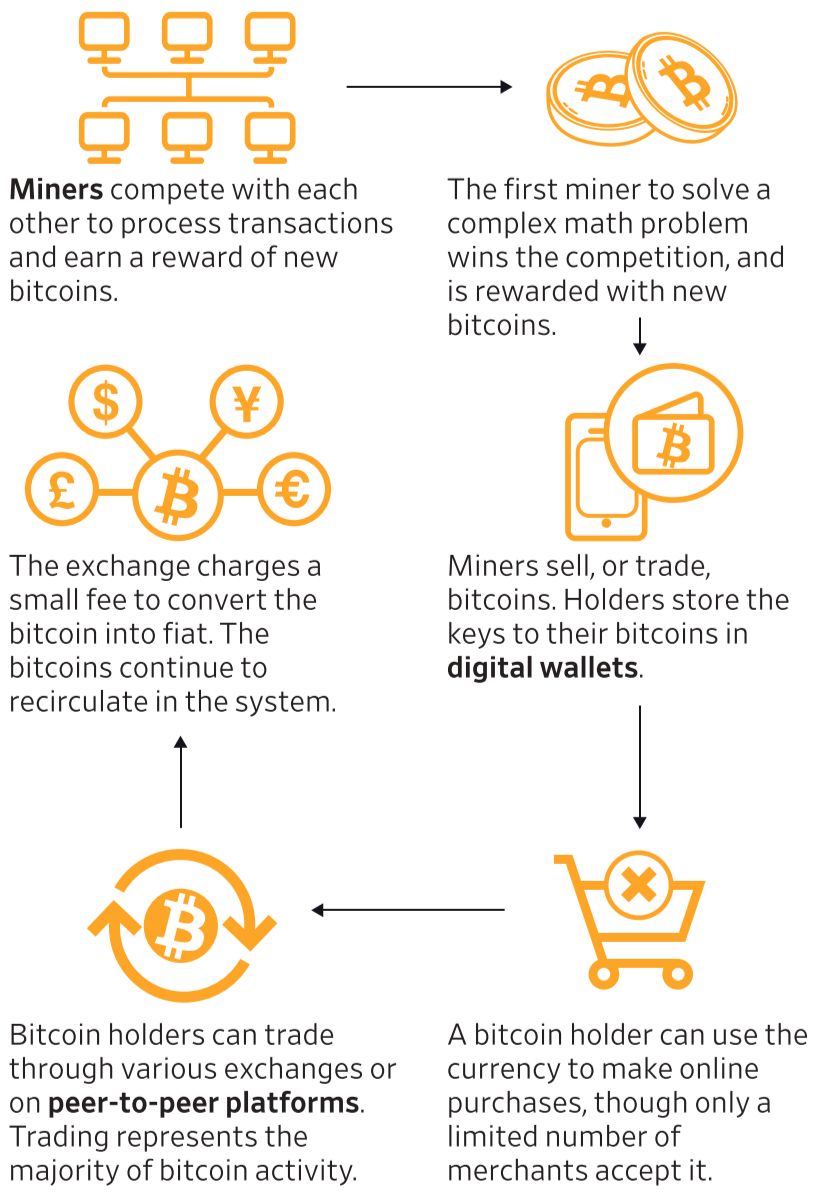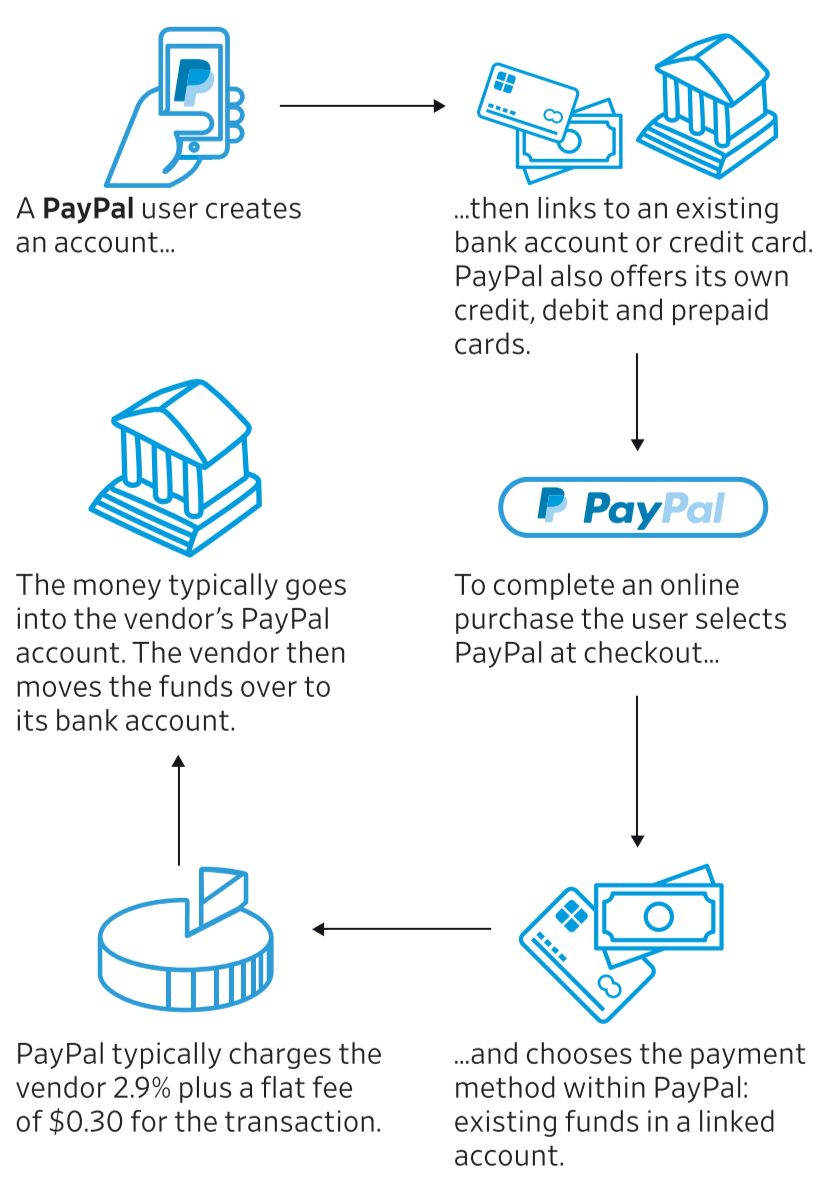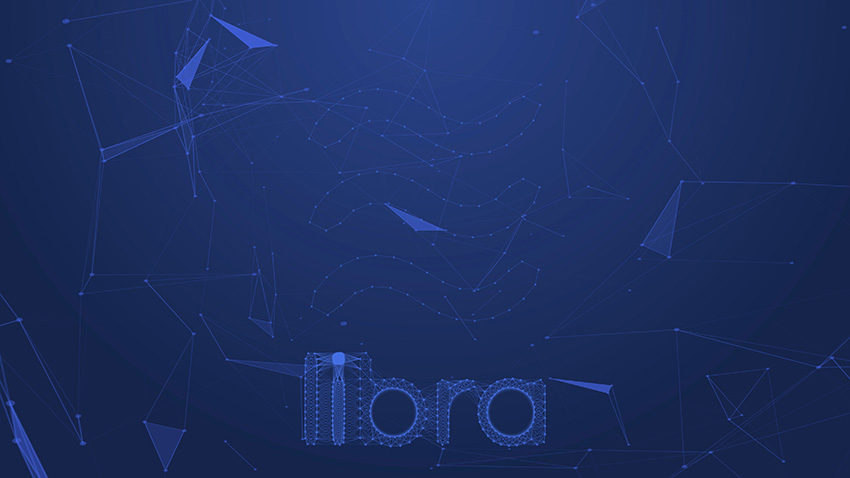Recently, Facebook released a white paper on its cryptocurrency, Libra, and described it as a “global currency.”
Being based on blockchain technology, Libra is very similar to bitcoin although it also depends on real assets such as a portfolio of stable government bonds; more than 20 partner institutions including MasterCard, Visa, PayPal and Coinbase will participate in the plan. Each partner agency will pay at least US$10 million as membership fee and Facebook initially intends to attract at least 100 partner institutions and US $1 billion of assets.
In practical operation, Libra is more like the online payment systems such as PayPal instead of the cryptocurrency like bitcoin. The following three figures illustrate why Libra is more like the PayPal instead of bitcoin.
Libra
The 2.4 billion active users of Facebook enable Libra with parallelizable access to the world. But the giant of social media needs to prove that the convenience of Libra will never be realized at the expense of privacy leakage.
The Libra blockchain is fundamentally different from that of bitcoin. Each certification for bitcoin transaction is distributed across all participants; Libra has its own centralized regulatory body, the Libra Association, which supervises and identifies all transactions. All the records of Libra transaction will also be stored in one location.

The trading mechanism of Libra is as follows:
- Libra Association issues currency;
- The Association distributes Libra coins to authorized dealers;
- Users download digital wallet from a new Facebook subsidiary called Calibra, then purchases Libras from an authorized seller’s website.
- Users use Libra to make an online purchase, such as a subscription to Spotify, one of the corporate partners of the currency.
- Spotify then exchanges the Libra that it received for dollars via a reseller;
- The authorized seller exchanges the currency with Libra Association, which then burns or destroys the currency.
Bitcoin
Bitcoin can be used for payment, but what bitcoin has attracted is a specific investor community.
Due to a variety of reasons and limitations, bitcoin has never really become a payment network. According to Chainanalysis, only 1% of bitcoin transactions are used for payment. Now, bitcoin is used more for profitable transactions with an average daily turnover rate of 10%. For the traders, bitcoin is not a cash for exchange but a profitable asset.
Although the bitcoin price is highly volatile, it may become a highly profitable asset like a tech stock or a Las Vegas property.

The trading mechanism of bitcoin is as follows:
- The mining workers compete to process transactions and earn a reward of new bitcoins;
- The first mining worker to solve a complex math problem wins the competition and is rewarded with new bitcoins;
- Mining workers sell or trade bitcoins. Holders store the keys to their bitcoins in digital wallets;
- A bitcoin holder can use the currency to make online purchase, though only a limited number of merchants accept it;
- Bitcoin holders can trade through various exchanges or on peer-to-peer platforms. Trading represents the majority of bitcoin activity;
- The exchange charges a small fee to convert the bitcoin into legal currency. The bitcoins continue to recirculate in the system.
PayPal
PayPal is also one of the founding members of Libra. PayPal and Libra seemingly have some overlaps, but one important difference is that Libra uses cryptocurrencies while PayPal uses the legal currency.
PayPal plays the role similar to that of an online bank where users can open an account with PayPal without a bank card or credit card. What’s different from bitcoin is that PayPal is not anonymous. PayPal is a licensed transfer trader, so it requires users to submit certification information, including the name and phone number.

The trading mechanism of PayPal is as follows:
- PayPal user creates an account;
- PayPal user then links to an existing back account or credit card. PayPal also offers its own credit, debit and prepaid cards;
- PayPal user selects PayPal at checkout to complete an online purchase;
- And chooses the payment method within PayPal;
- PayPal typically charges the vendor 2.9% plus a flat fee of US$0.3 for the transaction;
- The money typically goes into the vendor’s PayPal account. The vendor then moves the funds over to its bank account.
Appendix
Series articles on Libra at EastShore:
- Differences among Libra, Bitcoin and PayPal | EastShore Mining Devices
- How is Libra Different from Other Currencies? | EastShore Mining Devices
- What will Facebook’s Libra bring to the world? | EastShore Mining Devices


Pingback: How is Libra Different from Other Currencies? | EastShore Mining Devices